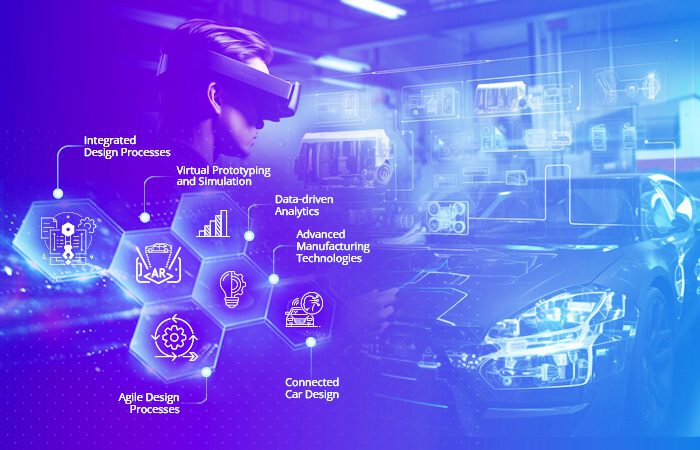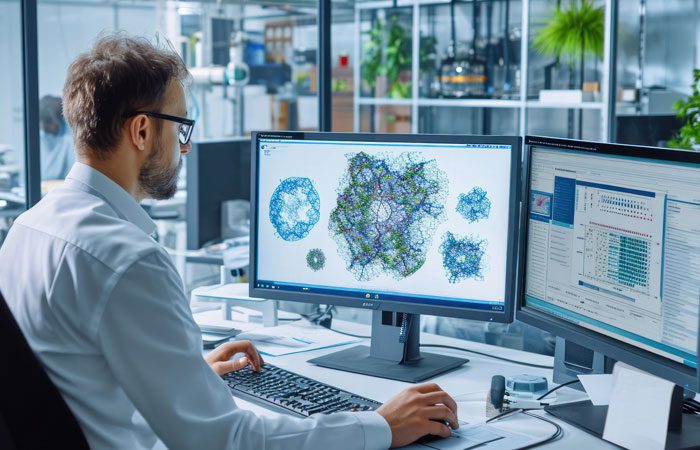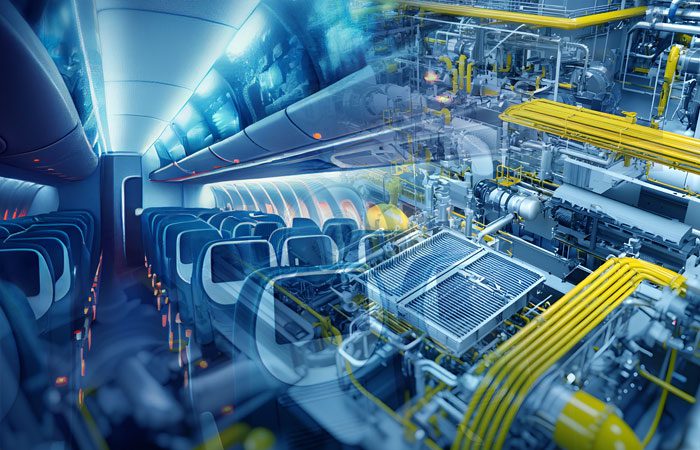
Role of Digital Transformation in Managing Automotive Design Complexities
In order to manage the complexity of vehicle design, digital transformation is essential. In reality, it is forcing automakers to alter their product design methodologies and begin creating vehicles with fresh features and services in response to customer demands and modern trends. According to a report from 2022, automobile manufacturing companies would convert 24% of their facilities into smart factories by that year, and 49% of those businesses have already invested more than $250 million in this digital transition.
With rapidly evolving technologies, automotive design has become increasingly complex due to factors such as safety regulations, fuel efficiency requirements, connectivity, and customer expectations.
Here are the top 6 ways in which digital transformation helps manage these complexities:
- Integrated Design Processes
Digital transformation enables the integration of design processes, bringing together various stakeholders, including designers, engineers, suppliers, and manufacturers, on a single digital platform. This collaboration allows for real-time information sharing, improved communication, and better decision-making, resulting in efficient automotive design.
Research demonstrates that digital technologies stimulate industrial transformation by enabling new interdependencies with firms outside and across firm and industry boundaries. However, we know little about the degree of novelty and breadth of digital technologies that have the potential to transform industries. Understanding the degree of novelty (spanning from radical to incremental) and breadth (spanning from one sector to multiple sectors) of digital technologies is important for measuring their impact on industrial transformation.
- Virtual Prototyping and Simulation
The automobile sector is under constant pressure to save development time and costs while maintaining or even improving car quality. By enhancing and better integrating potent computer-aided design technologies, engineers and researchers in science and industry are creating efficient strategies and adaptable tools to solve this problem.
Before physical production, designers can construct virtual prototypes and test numerous scenarios using digital tools like computer-aided design (CAD) software, virtual reality (VR), and simulation technologies. This lessens the need for pricey physical prototypes and iterations by aiding in the identification and correction of potential design flaws.
- Data-driven Analytics
Digital transformation in the automotive industry generates vast amounts of data from various sources, including production processes, vehicle performance, customer feedback, and market trends. By leveraging advanced analytics and machine learning algorithms, this data can be analyzed to derive valuable insights, leading to better informed design decisions and optimizations.
- Advanced Manufacturing Technologies
Adoption of cutting-edge manufacturing technologies like additive manufacturing (3D printing), robotics, and automation is made easier by digital transformation. By increasing production flexibility, accuracy, and efficiency, these technologies simplify the manufacturing process at the design stage.
Since the 1970s, businesses in the automotive sector have used robots on assembly lines to boost production, but now this practice is spreading. For instance, the BMW Group deploys Nvidia-developed smart transportation and material handling robots. With information from IoT and neural network techniques, the robots can recognize and move items on their own.
To manage their production lines, companies employ data from IoT and advanced machine learning algorithms. This includes creating and amending timetables, monitoring factory maintenance activities, and identifying problematic situations.
- Connected Car Design
The rise of connected cars requires automotive designers to incorporate new features and technologies seamlessly into the vehicle’s design. Digital transformation enables designers to integrate connectivity, in-car infotainment systems, sensors, and advanced driver-assistance systems (ADAS) seamlessly, keeping up with evolving customer demands and industry trends.
- Agile Design Processes
Digital transformation allows for agile design processes, making it easier to adapt to evolving market requirements and rapidly iterate designs. With digital tools and platforms, automotive designers can quickly test and implement design changes, reducing time-to-market and improving overall competitiveness.
Thus, digital transformation plays a pivotal role in managing automotive design complexities by integrating design processes, enabling virtual prototyping, leveraging data-driven analytics, adopting advanced manufacturing technologies, facilitating connected car design, and enabling agile design processes. These digital tools and capabilities help automotive companies overcome design challenges, optimize production, and stay ahead in the rapidly evolving automotive industry.


